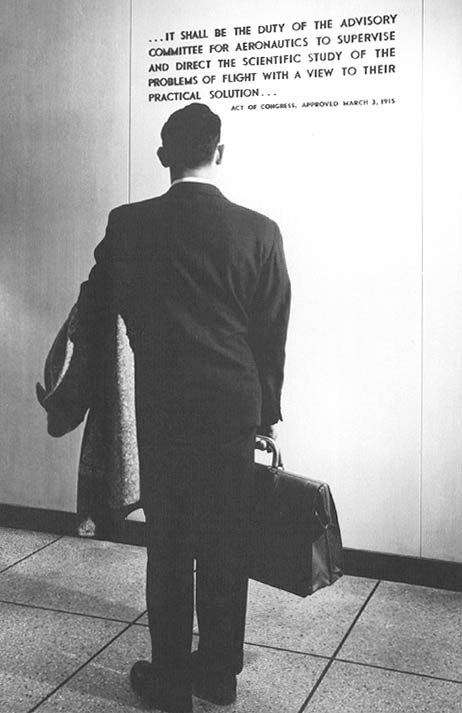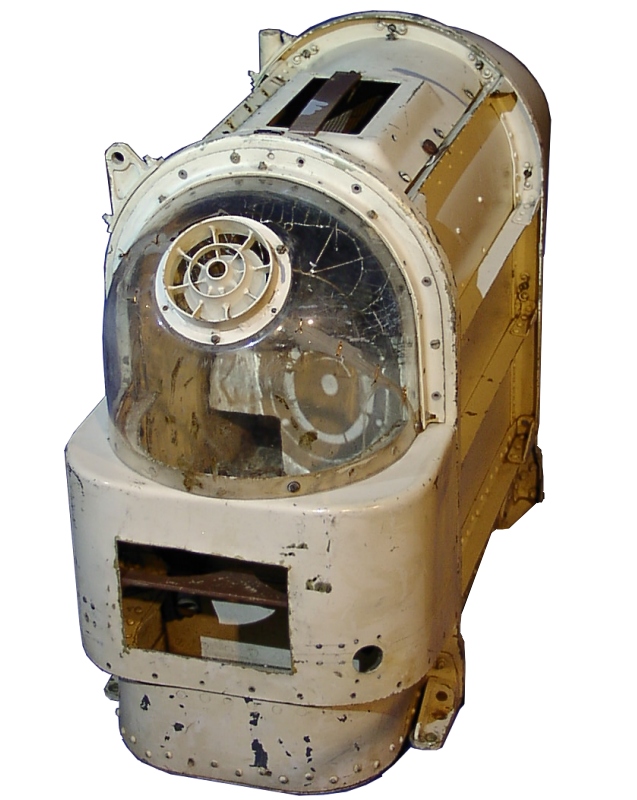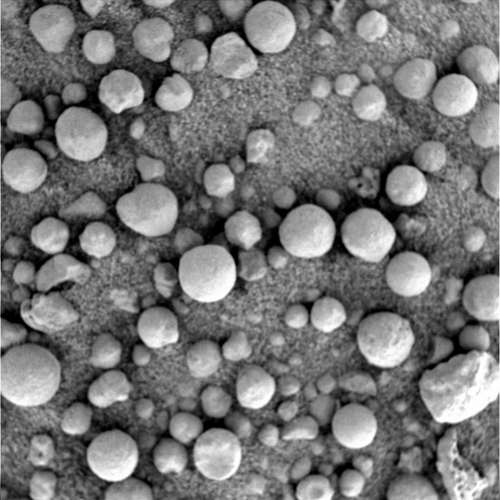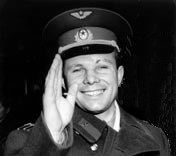|
Mercury Seven
The Mercury Seven were the group of seven astronauts selected to fly spacecraft for Project Mercury. They are also referred to as the Original Seven and Astronaut Group 1. Their names were publicly announced by NASA on April 9, 1959; these seven original American astronauts were Scott Carpenter, Gordon Cooper, John Glenn, Gus Grissom, Wally Schirra, Alan Shepard, and Deke Slayton. The Mercury Seven created a new profession in the United States, and established the image of the American astronaut for decades to come. All of the Mercury Seven eventually flew in space. They piloted the six spaceflights of the Mercury program that had an astronaut on board from May 1961 to May 1963, and members of the group flew on all of the NASA human spaceflight programs of the 20th centuryMercury, Gemini, Apollo, and the Space Shuttle. Shepard became the first American to enter space in 1961, and later walked on the Moon on Apollo 14 in 1971. Grissom flew the first manned Gemini mission in 196 ... [...More Info...] [...Related Items...] OR: [Wikipedia] [Google] [Baidu] |
Alan Shepard
Alan Bartlett Shepard Jr. (November 18, 1923 – July 21, 1998) was an American astronaut, United States naval aviator, naval aviator, test pilot, and businessman. In 1961, he became the second person and the first American to travel into space and, in 1971, he became the List of Apollo astronauts#Apollo astronauts who walked on the Moon, fifth and oldest person to walk on the Moon at age 47. A graduate of the United States Naval Academy at Annapolis, Shepard saw action with the surface navy during World War II. He became a naval aviator in 1946, and a test pilot in 1950. He was selected as one of the original NASA Mercury Seven astronauts in 1959, and in May 1961 he made the first crewed Project Mercury flight, Mercury-Redstone 3, in a spacecraft he named ''Freedom 7''. His craft entered space, but was not capable of achieving orbit. He became the second person, and the first American, to travel into space, and the first space traveler to manually control the orientation ... [...More Info...] [...Related Items...] OR: [Wikipedia] [Google] [Baidu] |
Apollo 1
Apollo 1, initially designated AS-204, was intended to be the first crewed mission of the Apollo program, the American undertaking to land the first man on the Moon. It was planned to launch on February 21, 1967, as the first low Earth orbital test of the Apollo command and service module. The mission never flew; a cabin fire during a launch rehearsal test at Cape Kennedy Air Force Station Launch Complex 34 on January 27 killed all three crew members—Command Pilot Gus Grissom, Senior Pilot Ed White, and Pilot Roger B. Chaffee—and destroyed the command module (CM). The name Apollo 1, chosen by the crew, was made official by NASA in their honor after the fire. Immediately after the fire, NASA convened an Accident Review Board to determine the cause of the fire, and both chambers of the United States Congress conducted their own committee inquiries to oversee NASA's investigation. The ignition source of the fire was determined to be electrical, and the fire spread rapidl ... [...More Info...] [...Related Items...] OR: [Wikipedia] [Google] [Baidu] |
National Advisory Committee For Aeronautics
The National Advisory Committee for Aeronautics (NACA) was a United States federal agency founded on March 3, 1915, to undertake, promote, and institutionalize aeronautical research. On October 1, 1958, the agency was dissolved and its assets and personnel were transferred to the newly created National Aeronautics and Space Administration (NASA). NACA is an initialism, i.e., pronounced as individual letters, rather than as a whole word (as was NASA during the early years after being established). Among other advancements, NACA research and development produced the NACA duct, a type of air intake used in modern automotive applications, the NACA cowling, and several series of NACA airfoils, which are still used in aircraft manufacturing. During World War II, NACA was described as "The Force Behind Our Air Supremacy" due to its key role in producing working superchargers for high altitude bombers, and for producing the laminar wing profiles for the North American P-51 Mustang. ... [...More Info...] [...Related Items...] OR: [Wikipedia] [Google] [Baidu] |
United States Air Force
The United States Air Force (USAF) is the air service branch of the United States Armed Forces, and is one of the eight uniformed services of the United States. Originally created on 1 August 1907, as a part of the United States Army Signal Corps, the USAF was established as a separate branch of the United States Armed Forces in 1947 with the enactment of the National Security Act of 1947. It is the second youngest branch of the United States Armed Forces and the fourth in order of precedence. The United States Air Force articulates its core missions as air supremacy, global integrated intelligence, surveillance and reconnaissance, rapid global mobility, global strike, and command and control. The United States Air Force is a military service branch organized within the Department of the Air Force, one of the three military departments of the Department of Defense. The Air Force through the Department of the Air Force is headed by the civilian Secretary of the ... [...More Info...] [...Related Items...] OR: [Wikipedia] [Google] [Baidu] |
Soviet Space Dog
During the 1950s and 1960s the Soviet space program used dogs for sub-orbital and orbital space flights to determine whether human spaceflight was feasible. In this period, the Soviet Union launched missions with passenger slots for at least 57 dogs. The number of dogs in space is smaller, as some dogs flew more than once. Most survived; the few that died were lost mostly through technical failures, according to the parameters of the test. A notable exception is Laika, the first animal to be sent into orbit, whose death during the 3 November 1957 Sputnik 2 mission was expected from its outset. Training Dogs were the preferred animal for the experiments because scientists felt dogs were well suited to endure long periods of inactivity. As part of their training, they were confined in small boxes for 15–20 days at a time. Stray dogs, rather than animals accustomed to living in a house, were chosen because the scientists felt they would be able to tolerate the rigorous and ... [...More Info...] [...Related Items...] OR: [Wikipedia] [Google] [Baidu] |
Laika
Laika (russian: link=no, Лайка; – 3 November 1957) was a Soviet space dog who was one of the first animals in space and the first to orbit the Earth. A stray mongrel from the streets of Moscow, she flew aboard the Sputnik 2 spacecraft, launched into low orbit on 3 November 1957. As the technology to de-orbit had not yet been developed, Laika's survival was never expected. She died of overheating hours into the flight, on the craft's fourth orbit. Little was known about the impact of spaceflight on living creatures at the time of Laika's mission, and animal flights were viewed by engineers as a necessary precursor to human missions. The experiment, which monitored Laika's vital signs, aimed to prove that a living organism could survive being launched into orbit and continue to function under conditions of weakened gravity and increased radiation, providing scientists with some of the first data on the biological effects of spaceflight. Laika died within hours f ... [...More Info...] [...Related Items...] OR: [Wikipedia] [Google] [Baidu] |
Sputnik 2
Sputnik 2 (, russian: Спутник-2, ''Satellite 2''), or Prosteyshiy Sputnik 2 (PS-2, russian: Простейший Спутник 2, italic=yes, ''Simplest Satellite 2'') was the second spacecraft launched into Earth orbit, on 3 November 1957, and the first to carry a living animal, a Soviet space dog named Laika. Laika died on the fourth orbit due to overheating caused by an air conditioning malfunction. Launched by the Soviet Union, Sputnik 2 was a cone-shaped capsule with a base diameter of that weighed around , though it was not designed to separate from the rocket core that brought it to orbit, bringing the total mass in orbit to . It contained several compartments for radio transmitters, a telemetry system, a programming unit, a regeneration and temperature-control system for the cabin, and scientific instruments. A separate sealed cabin contained the dog Laika. Engineering and biological data were transmitted using the Tral D telemetry system, transmitting dat ... [...More Info...] [...Related Items...] OR: [Wikipedia] [Google] [Baidu] |
Space Race
The Space Race was a 20th-century competition between two Cold War rivals, the United States and the Soviet Union, to achieve superior spaceflight capability. It had its origins in the ballistic missile-based nuclear arms race between the two nations following World War II. The technological advantage demonstrated by spaceflight achievement was seen as necessary for national security, and became part of the symbolism and ideology of the time. The Space Race brought pioneering launches of artificial satellites, robotic space probes to the Moon, Venus, and Mars, and human spaceflight in low Earth orbit and ultimately to the Moon. Public interest in space travel originated in the 1951 publication of a Soviet youth magazine and was promptly picked up by US magazines. The competition began on July 30, 1955 when the United States announced its intent to launch artificial satellites for the International Geophysical Year. Four days later, the Soviet Union responded by decl ... [...More Info...] [...Related Items...] OR: [Wikipedia] [Google] [Baidu] |
Cold War
The Cold War is a term commonly used to refer to a period of Geopolitics, geopolitical tension between the United States and the Soviet Union and their respective allies, the Western Bloc and the Eastern Bloc. The term ''Cold war (term), cold war'' is used because there was no large-scale fighting directly between the two superpowers, but they each supported major regional conflicts known as proxy wars. The conflict was based around the ideological and geopolitical struggle for global influence by these two superpowers, following their temporary Allies of World War II, alliance and victory against Nazi Germany and Empire of Japan, Imperial Japan in 1945. Aside from the Nuclear arms race, nuclear arsenal development and conventional military deployment, the struggle for dominance was expressed via indirect means such as psychological warfare, propaganda campaigns, Cold War espionage, espionage, far-reaching Economic sanctions, embargoes, rivalry at sports events, and technolog ... [...More Info...] [...Related Items...] OR: [Wikipedia] [Google] [Baidu] |
Soviet Union
The Soviet Union,. officially the Union of Soviet Socialist Republics. (USSR),. was a List of former transcontinental countries#Since 1700, transcontinental country that spanned much of Eurasia from 1922 to 1991. A flagship communist state, it was nominally a Federation, federal union of Republics of the Soviet Union, fifteen national republics; in practice, both Government of the Soviet Union, its government and Economy of the Soviet Union, its economy were highly Soviet-type economic planning, centralized until its final years. It was a one-party state governed by the Communist Party of the Soviet Union, with the city of Moscow serving as its capital as well as that of its largest and most populous republic: the Russian Soviet Federative Socialist Republic, Russian SFSR. Other major cities included Saint Petersburg, Leningrad (Russian SFSR), Kyiv, Kiev (Ukrainian Soviet Socialist Republic, Ukrainian SSR), Minsk (Byelorussian Soviet Socialist Republic, Byelorussian SSR), Tas ... [...More Info...] [...Related Items...] OR: [Wikipedia] [Google] [Baidu] |
Sputnik 1
Sputnik 1 (; see § Etymology) was the first artificial Earth satellite. It was launched into an elliptical low Earth orbit by the Soviet Union on 4 October 1957 as part of the Soviet space program. It sent a radio signal back to Earth for three weeks before its three silver-zinc batteries ran out, and continued in orbit for three months until aerodynamic drag caused it to fall back into the atmosphere on 4 January 1958. It was a polished metal sphere in diameter with four external radio antennas to broadcast radio pulses. Its radio signal was easily detectable by amateur radio operators, and the 65° orbital inclination made its flight path cover virtually the entire inhabited Earth. The satellite's unanticipated success precipitated the American Sputnik crisis and triggered the Space Race, part of the Cold War. The launch was the beginning of a new era of political, military, technological and scientific developments. The word ''sputnik'' is Russian for ''satellite ... [...More Info...] [...Related Items...] OR: [Wikipedia] [Google] [Baidu] |
List Of Spaceflight Records
Records and firsts in spaceflight are broadly divided into crewed and uncrewed categories. Records involving animal spaceflight have also been noted in earlier experimental flights, typically to establish the feasibility of sending humans to outer space. The notion of "firsts" in spaceflight follows a long tradition of firsts in aviation, but is also closely tied to the Space Race. During the 1950s and 1960s, the Soviet Union and the United States competed to be the first countries to accomplish various feats. In 1957, the Soviet Union launched Sputnik 1, the first artificial orbital satellite. In 1961, Soviet Vostok 1 cosmonaut Yuri Gagarin became the first person to enter space and orbit the Earth, and in 1969 American Apollo 11 astronaut Neil Armstrong became the first person to set foot on the Moon. No human has traveled beyond low Earth orbit since 1972, when the Apollo program ended. During the 1970s, the Soviet Union directed its energies to human habitation of space ... [...More Info...] [...Related Items...] OR: [Wikipedia] [Google] [Baidu] |







.png)

